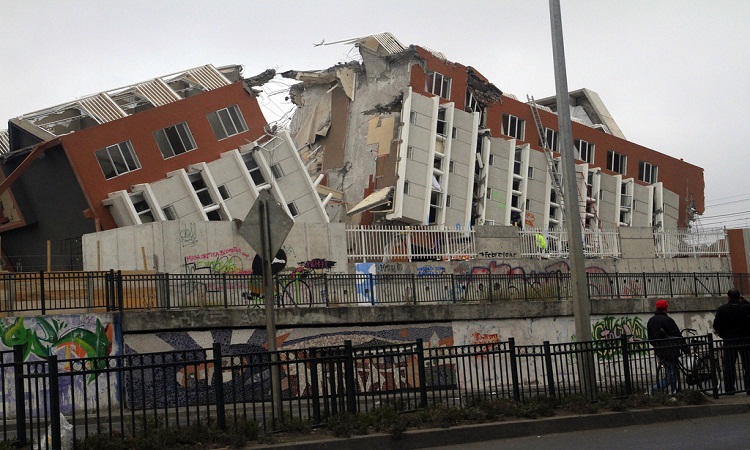Civil Engineers do many activities at the construction sites and there is certain work which repetitive in the future. So, some points and tricks and tips which civil engineers should remember for faster calculation as well as quick solutions to construction site problems. Points to Remember For Civil Site…
Building Damage Due to Natural Causes & Designing Procedure
Building failure occurs when a building fails to do its designated functions. Such failures can be either structural failures or serviceability failures. Failure of a building can take place in various ways. The factors affecting maybe one or more of the following viz. Geometrical shape and size of the building…
Earthquake Resistant Design and Detailing of Structures
Damage of earthquake depends upon many factors like intensity, duration & frequency content of the ground motion, geologic and soil condition, quality of construction, etc. some sociologic factors are also important, such as time of the day of the earthquake occurrence, density of population. Importance of Earthquake Study Earthquakes have…
Principles and Practices Followed in the Design and Execution of Tall Buildings
Introduction Tall building project brings together high strength material, experienced professionals, and innovations. Burj Khalifa which signifies human ambition to rise higher reflects an integration of these three critical aspects: High strength concrete till 601 m and 227 m steel spire at the top Collaboration among Architect, Structural Engineer, Wind…
Performance of Pervious Concrete with Recycled Concrete Aggregate
Introduction Pervious concrete pavements act as a stormwater management tool. In recent times, several cities around the world have encountered frequent flooding due to the combined results of increased rainfall and high impermeable surface areas. As a result, the drainage system gets chocked leading to flash flooding, thus causing severe…
Recycled Concrete Aggregates – Its Uses, Properties, Advantages & Disadvantages
History Recycled concrete aggregates or Crushed concrete aggregates has been in use since the ancient times, only to be integrated with gravel, sand, and cement to ensure durability. The practice was first recorded in the 1860s. US construction companies were reluctant to use the technique at first since crushing cured…
Strengthening of Bridge Structure Using Carbon Fiber Reinforced Polymer (CFRP) System
Bridge structures deteriorate due to various reasons over time. In many situations, merely repairing the cracks and spalls are not sufficient and there is a need to strengthen the structure in order that it desired purpose. There are various conventional practices for strengthening which have extensively used but they have…
Carbon Fiber Reinforced Polymer – Properties, Applications, Advantages & Disadvantages
What is Carbon Fiber Reinforced Polymer? Carbon fiber reinforced polymer(CFRP) are composite materials that rely on the carbon fiber to provide the stiffness and strength while the polymer provides a cohesive matrix to protect & hold the fiber together and provides some toughness. Carbon fiber reinforced polymer (CFRP) are manufactured…
India’s Longest Road Tunnel Chenani – Nashri Tunnel
Introduction The Chenani – Nashri Tunnel (also known as Dr. Syama Prasad Mookerjee Tunnel) is India’s longest road tunnel completed in the Udhampur district of Jammu and Kashmir. The 9.2 km long road tunnel is a major road tunnel project in Northern India and the biggest of the country which…
What is Aluminium Formwork System? Its Advantages & Disadvantages
Aluminium Formwork System or Aluminium Shuttering is invented by the Malaysian company Mivan in 1990. So, it is also called Mivan Shuttering. In Aluminium Formwork System or Aluminium Shuttering, we can cast the whole slab, beam, and column at one go making the unit a composite structure. What is Aluminium…










